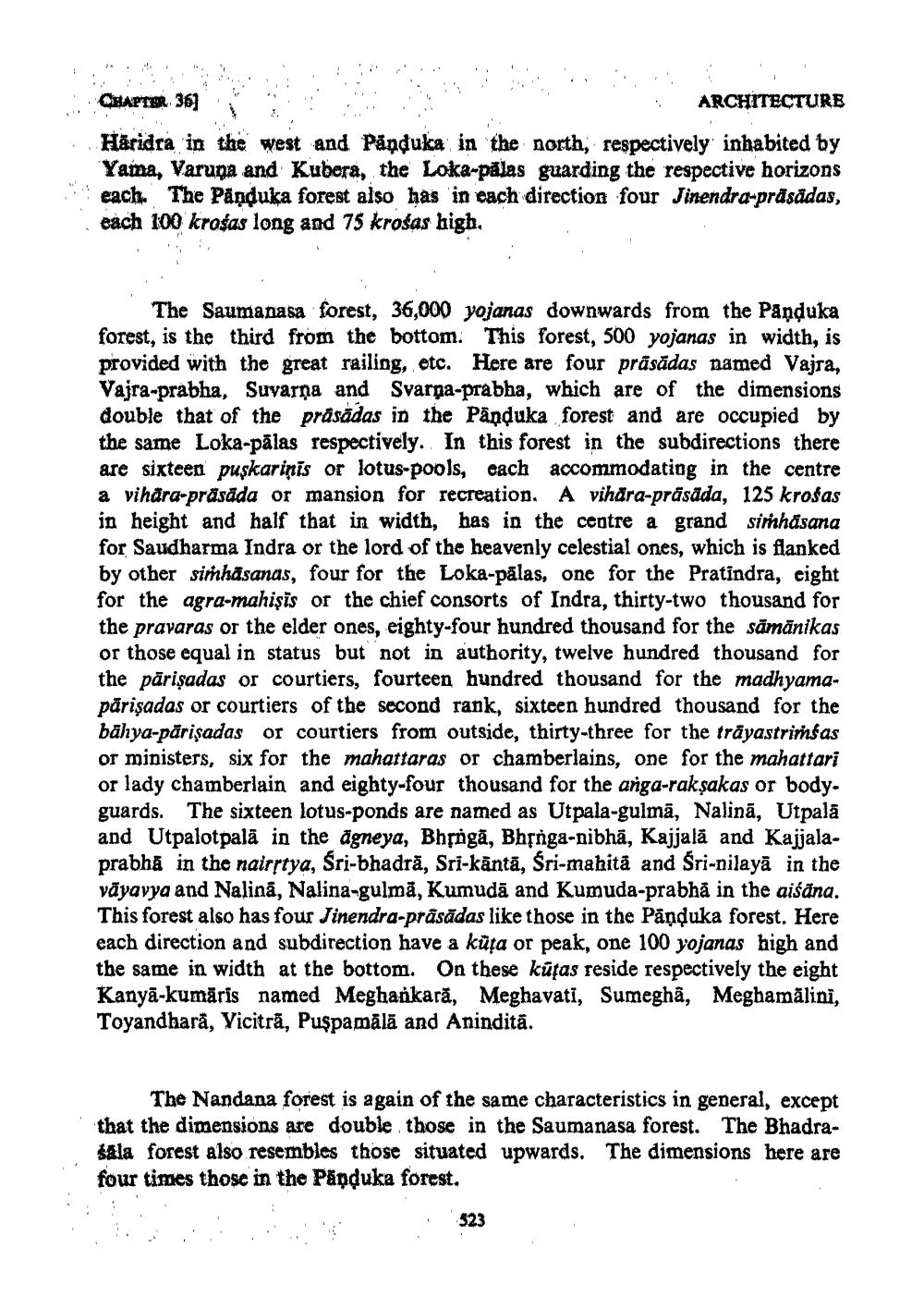________________
CHAPTER 36]
ARCHITECTURE
Haridra in the west and Panduka in the north, respectively inhabited by Yama, Varuna and Kubera, the Loka-palas guarding the respective horizons each. The Panduka forest also has in each direction four Jinendra-prāsādas, each 100 krosas long and 75 krosas high.
The Saumanasa forest, 36,000 yojanas downwards from the Panduka forest, is the third from the bottom. This forest, 500 yojanas in width, is provided with the great railing, etc. Here are four präsādas named Vajra, Vajra-prabha, Suvarna and Svarna-prabha, which are of the dimensions double that of the prasadas in the Panduka forest and are occupied by the same Loka-pālas respectively. In this forest in the subdirections there are sixteen puskariņis or lotus-pools, each accommodating in the centre a vihara-prāsāda or mansion for recreation. A vihāra-prāsāda, 125 krosas in height and half that in width, has in the centre a grand simhasana for Saudharma Indra or the lord of the heavenly celestial ones, which is flanked by other simhasanas, four for the Loka-palas, one for the Pratindra, eight for the agra-mahişis or the chief consorts of Indra, thirty-two thousand for the pravaras or the elder ones, eighty-four hundred thousand for the sämänikas or those equal in status but not in authority, twelve hundred thousand for the păriṣadas or courtiers, fourteen hundred thousand for the madhyamapāriṣadas or courtiers of the second rank, sixteen hundred thousand for the bāhya-pāriṣadas or courtiers from outside, thirty-three for the trāyastrimas or ministers, six for the mahattaras or chamberlains, one for the mahattari or lady chamberlain and eighty-four thousand for the anga-rakṣakas or body. guards. The sixteen lotus-ponds are named as Utpala-gulmā, Nalinā, Utpalā and Utpalotpala in the agneya, Bhṛngã, Bhṛnga-nibhā, Kajjalā and Kajjalaprabha in the nairṛtya, Śri-bhadra, Sri-kāntā, Śri-mahitā and Śri-nilaya in the vāyavya and Nalina, Nalina-gulmā, Kumudā and Kumuda-prabha in the aiśāna. This forest also has four Jinendra-prāsādas like those in the Panduka forest. Here each direction and subdirection have a küța or peak, one 100 yojanas high and the same in width at the bottom. On these kūtas reside respectively the eight Kanya-kumāris named Meghankara, Meghavati, Sumegha, Meghamālini, Toyandhara, Vicitra, Puspamālā and Anindita.
The Nandana forest is again of the same characteristics in general, except that the dimensions are double those in the Saumanasa forest. The Bhadrašála forest also resembles those situated upwards. The dimensions here are four times those in the Panduka forest.
523




